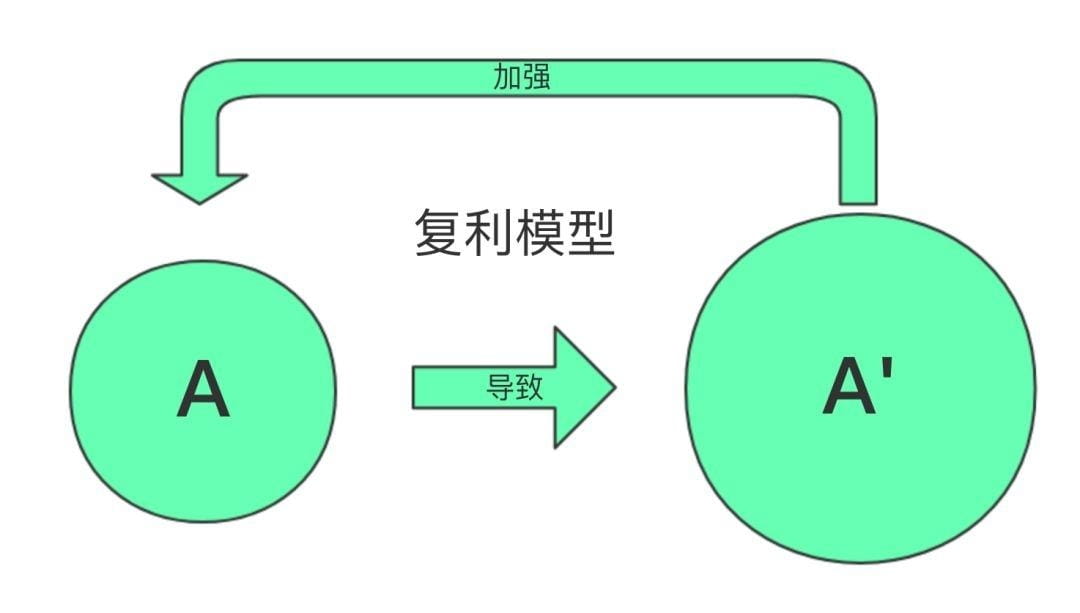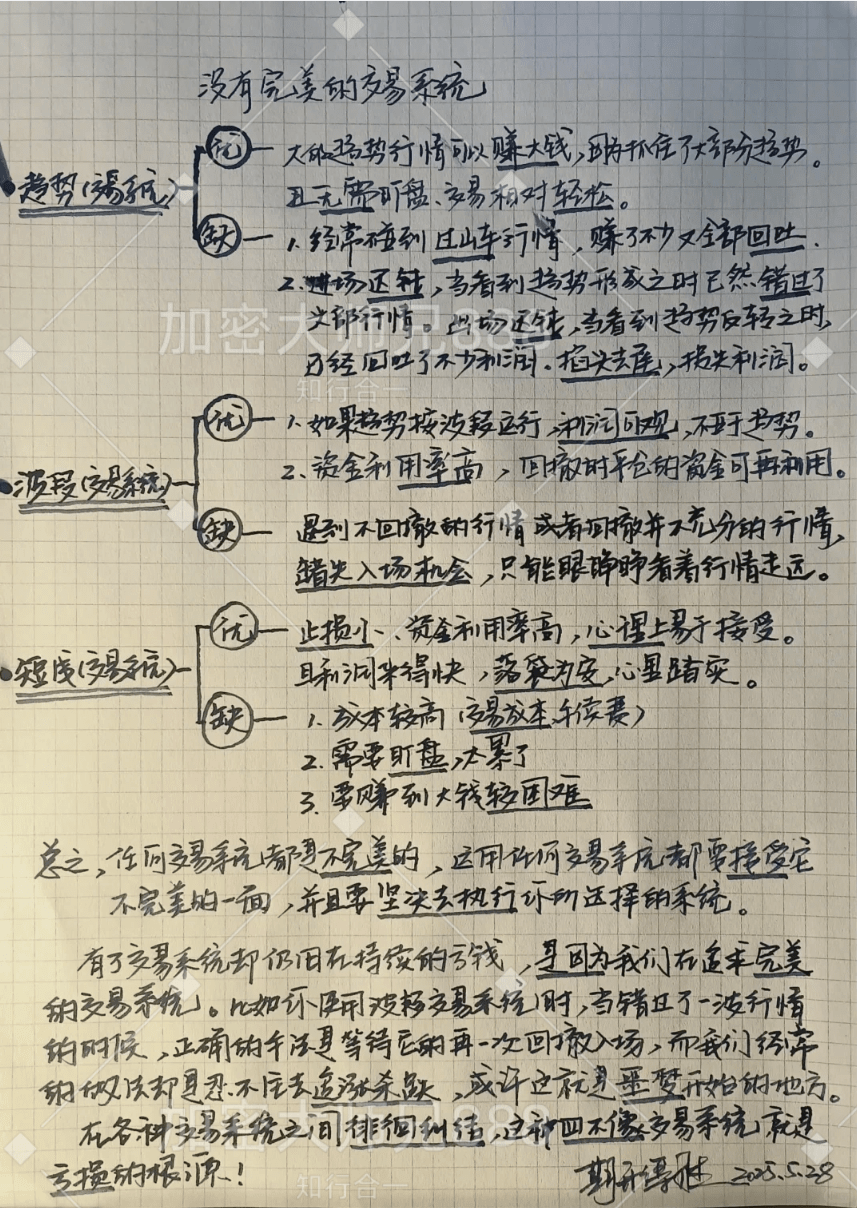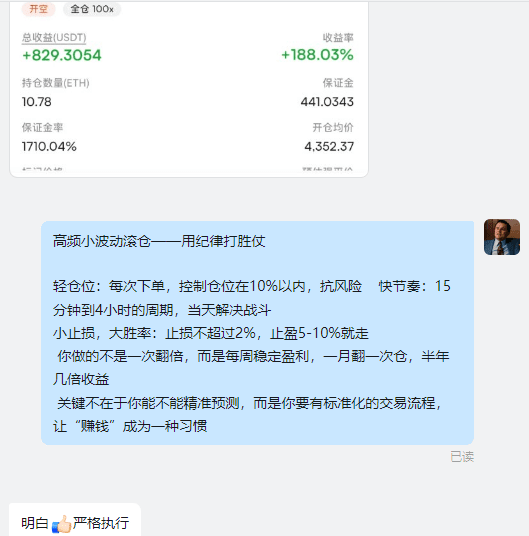1. Compound Model: Replace 'gambling nature' with the Kelly formula.

Original size change image p3-flow-imagex-sign.byteimg.com
Capital Splitting: Reasonable capital allocation is the cornerstone of success. It is recommended to allocate the principal in a '5:3:2' ratio, with 50% used to build a robust position, choosing mainstream, stable digital currencies like Bitcoin (BTC) and Ethereum (ETH) as the ballast of the investment portfolio, providing solid protection for asset preservation; 30% allocated to trend positions for capturing mid-term market trends, seeking higher returns; and the remaining 20% as exploratory positions, focusing on emerging, potentially high-risk projects, adding vitality and imagination to the investment portfolio.
Stop-Loss Rules: Strict stop-loss discipline is key to controlling risk. Set a single trade loss not exceeding 3% of total funds; for example, if you have $10,000 in capital, the stop-loss amount for a single trade should be strictly controlled within $300. This rule effectively avoids devastating blows to the account from a single major loss, ensuring that capital is always retained for a comeback amidst market uncertainty.
Reinvesting Profits: When account profits reach 10%, withdraw 50% of the profits and convert them into stablecoins (such as USDT, USDC), locking in this portion of funds to realize profits; the remaining 50% is used for rolling increases, further expanding the investment scale, leveraging the power of compounding to promote continuous asset growth. This way, you can fully enjoy profits during market uptrends while retaining a safety cushion during market fluctuations.
Technical Verification: Technical indicators provide strong support for trading decisions. When BTC's weekly MACD shows a golden cross and the relative strength index (RSI) breaks above 50, it usually indicates a strengthening bullish signal, allowing for the initiation of trend positions; when BTC's daily Bollinger Bands are tightening, it indicates reduced market volatility and an impending direction choice, at which point exploratory positions can be used for phased building to seize potential investment opportunities.
2. Trend Judgment: Dual indicators to lock in entry points.
Bear Market Layout: In a bear market, the fear and greed index and the MVRV ratio are important reference indicators. When the fear and greed index is below 25, it indicates that the market is in a state of extreme fear, with investors generally panicking and selling; at the same time, when BTC's MVRV ratio (market value to realized value ratio) is less than 1.5, it means that the price of Bitcoin is undervalued relative to its intrinsic value. At this time, 80% of funds can be used for phased buying to gradually accumulate cheap chips, preparing for the arrival of a bull market.
Bull Market Entry: In a bull market, when the price breaks above the 120-day moving average, it indicates that the market is entering an upward trend; a 200% increase in trading volume shows that market trading is active and funds are flooding in; and the MACD histogram turns positive, further confirming the formation of a bullish trend. When these three conditions are met simultaneously, it forms a triple confirmation signal, and entering at this time can effectively increase the probability of investment success by capturing the bull market's upward momentum.
Case Study: Looking back at 2023, when BTC price dropped to $26,000, the MVRV ratio was 1.4, combined with a fear and greed index of 18, a clear bearish buy signal emerged. Investors who keenly captured this signal and decisively entered the market reaped substantial returns during the subsequent market rebound. This case fully demonstrates the effectiveness of using dual indicators to judge trends and seize entry opportunities.
3. Track Screening: On-chain data + technical dual verification.
DePIN Track: For the DePIN (Decentralized Physical Infrastructure Network) track, focus on Total Locked Value (TVL) and Daily Active Addresses. When the weekly growth rate of TVL exceeds 15% and the number of daily active addresses exceeds 1000, it indicates that the project in this track has high activity and growth potential, making it a priority for layout, such as projects like Filecoin and Render.
RWA Sector: In the RWA (Real World Assets) sector, institutional holding ratio and on-chain lending rates are key indicators. When the institutional holding ratio exceeds 30%, it indicates that the project has gained recognition from institutional investors, having a certain level of stability; if the on-chain lending rate is below 5%, it means that the project's financing cost is relatively low and its financial condition is relatively healthy. Such projects can be considered to have a margin of safety, like MakerDAO and Aave.
AI Track: The AI track is developing rapidly, and GitHub submission volume and social media heat index can reflect the project's technical strength and market attention. When the weekly growth rate of GitHub submissions exceeds 20% and the social media heat index exceeds 0.8, the project can be included in the observation pool for continuous tracking of its development dynamics, such as Fetch.ai and SingularityNET.
Technical Tools: Utilizing Santiment's 'Emerging Trends' module enables rapid screening of potential investment targets. At the same time, combining classic patterns such as daily W bottoms and head-and-shoulders bottoms for bottom confirmation on the selected targets can improve the accuracy of investment decisions. When a project's price forms a W bottom or head-and-shoulders bottom pattern on the daily chart, and the right shoulder's trading volume significantly increases, it often indicates the formation of a bottom, presenting a good buying opportunity.
4. Averaging Strategy: Laddered investment to control drawdowns.
Breakthrough Averaging: During price increases, for each effective breakthrough of a Fibonacci resistance level (such as 0.382, 0.618, etc.), an additional 10% of the trend position can be added. Fibonacci resistance levels are key price retracement or rebound positions calculated based on the Fibonacci sequence, and breaking through these positions usually indicates further strengthening of bullish power, making it an opportunity to increase positions for potentially higher returns.
Withdrawal on Retracement: When the price falls below the previous low, and the 5-day moving average shows a death cross, it signals a potential reversal in market trend. The last added position should be unconditionally withdrawn to control risk and avoid significant profit withdrawal due to market retracement. Strictly adhering to this rule can effectively protect existing investment gains.
Prohibited Operation: When the RSI indicator is above 70 or the price is outside the upper Bollinger Band, the market is in an overbought state. Opening new positions at this time is likely to chase high prices, facing significant downside risk. Therefore, in such cases, opening new positions should be strictly prohibited, and caution should be maintained while waiting for more suitable investment opportunities.
5. Profit-Taking Discipline: Three-tier exit mechanism to lock in profits.
First Target: When investment profits reach 30%, sell 1/3 of the position and move the stop-loss to the cost price. This locks in some profits while retaining a portion of the position to enjoy subsequent gains if the market continues to rise; at the same time, moving the stop-loss to the cost price ensures no loss even if the market reverses.
Second Target: When profits reach 50%, sell another 1/3 of the position, setting the stop-profit point for the remaining position at the previous low plus 5%. With further increases in profits, gradually reducing positions can further lock in profits, while setting reasonable stop-profit points can protect the remaining positions' gains during market fluctuations.
Ultimate Rule: In crypto investment, resolutely reject the fantasy of 'another 10% increase.' Before each trade, set a pre-defined exit price in the trading plan, and once the price reaches this pre-defined exit price, decisively exit to avoid profit withdrawal due to greed. When SOL broke through $120 in 2024, it triggered a three-tier profit-taking mechanism; if investors strictly followed the rules, they could ultimately exit at $180, successfully locking in 50% of their profits. This case once again proves the importance of strictly adhering to profit-taking discipline.
6. Cycle Management: Reset the system with technical signals.
Monthly Signal: When the closing price of BTC on the monthly chart falls below MA20 (20-month moving average), it signals a potential significant change in market trend. At this point, 20% of total funds should be converted into stablecoins (USDC/USDT) to reduce portfolio risk, maintain cash reserves, and wait for better investment opportunities.
Bull Market Top Signal: When the weekly RSI shows divergence and forms a death cross, it is usually a signal that the bull market is nearing its end. At this point, decisively execute 'liquidate + withdraw 50%' operations to cash out some assets for security, avoiding significant losses during the transition from a bull market to a bear market.
Psychological Construction: Regularly review trading records every quarter, analyzing key indicators such as win rate and profit-loss ratio, summarizing experiences and lessons, and continuously optimizing investment strategies. At the same time, maintain a good mindset to avoid letting short-term market fluctuations influence investment decisions; in long-term investments in the crypto world, mindset and discipline are often more important than technical skills.
Ten years of practical experience has made me deeply understand that there is no 'holy grail' in the crypto world that guarantees 100% success, but there is an effective 'survival algorithm.' Technical analysis is not an accurate prediction of future markets but rather a way to cage human greed and fear by establishing clear rules, making investment decisions more rational and scientific.
While most people are blindly searching for opportunities in the K-line chart, true experts have already built a comprehensive trading system to steadily harvest certain profits from the market. I hope the six-step rule shared in this article can provide strong help for your investment journey in the crypto world, assisting you in achieving stable wealth growth.
Last night, the 'trading system' shared in the student group was forwarded over a thousand times in half an hour. I organized it into technical dry goods, giving new followers the 'first lesson on risk management':


Trading cryptocurrencies is about repeating simple tasks; persistently using one method over a long time can lead to mastery, and trading can be as familiar and instinctive as in other industries, allowing for quick and decisive decisions.
This year marks my seventeenth year in trading cryptocurrencies, starting with $10,000, and now making a living from it! I can say that I have used 80% of the methods and techniques in the market; if you want to take trading as a second career to support your family, sometimes listening and observing more can reveal things beyond your cognition, allowing you to avoid at least five years of detours!
Follow me @加密大师兄888 Many souls are lost on the crypto journey; I only ferry those with fate, accepting disciples...



